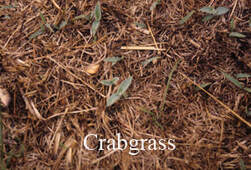 Crabgrass preventers are another name for preemergence herbicides that prevent crabgrass seeds from developing into mature plants. Many people have a somewhat foggy idea of how they work and assume they kill the weed seed. Such is not the case. They do not kill the seed or even keep the seed from germinating but rather kill the young plant after it germinates. Therefore, they do not prevent germination but prevent emergence. Crabgrass preventers are just that – preventers. With few exceptions they have no effect on existing crabgrass plants, so they must be applied before germination. Additionally, preventers do not last forever once applied to the soil. Microorganisms and natural processes begin to gradually break them down soon after they are applied. If some products are applied too early, they may have lost much of their strength by the time they are needed. Most crabgrass preventers are fairly ineffective after about 60 days, but there is considerable variation among products. (Dimension and Barricade last longer. See below.) For most of Kansas, crabgrass typically begins to germinate around May 1 or a little later. April 15 is normally a good target date for applying preventer because it gives active ingredients time to evenly disperse in the soil before crabgrass germination starts. However, this year, we may want to go a week or two early. For southeast Kansas, this week would be appropriate, and for northwest Kansas, mid-April would be best. Even better, base timing on the bloom of ornamental plants. The Eastern Redbud tree is a good choice for this purpose. When the trees in your area approach full bloom, apply crabgrass preventer. A follow-up application will be needed about 8 weeks later unless you are using Dimension or Barricade. Products that do require a follow-up application include pendimethalin (Scotts Halts) and Team (Hi-Yield Crabgrass Control). Dimension and Barricade are the only two products that give season-long control of crabgrass from a single application. In fact, they can be applied much earlier than April 15 and still have sufficient residual strength to last the season. Barricade can even be applied in the fall for crabgrass control the next season. Dimension can be applied as early as March 1. Because of the added flexibility in timing, these products are favorites of lawn care companies who have many customers to service in the spring. Though Dimension is usually not applied as early as Barricade, it is the herbicide of choice if it must be applied later than recommended. It is the exception to the rule that preemergence herbicides do not kill existing weeds. Dimension can kill crabgrass as long as it is young (two- to three-leaf stage). Dimension is also the best choice if treating a lawn that was planted late last fall. Normally a preemergence herbicide is not recommended unless the lawn has been mowed two to four times. But Dimension is kind to young tall fescue, perennial ryegrass, and Kentucky bluegrass seedlings and some formulations can be applied as early as two weeks after the first sign of germination. However, read the label of the specific product you wish to use to ensure that this use is allowed. Lawns established in the fall can be safely treated with Dimension the following spring even if they have not been mowed. Note that products containing Dimension and Barricade may use the common name rather than the trade name. The common chemical name for Dimension is dithiopyr and for Barricade is prodiamine. Remember, when using any pesticide, read the label and follow instructions carefully. We recommend crabgrass preventers be applied before fertilizer so that the grass isn’t encouraged to put on too much growth too early. However, it may be difficult to find products that contain preemergents without fertilizer. Those that don’t contain fertilizer are listed below. I didn’t find any products containing Barricade that did not also have a fertilizer. If anyone knows of other products that should be listed, let us know and we will publish them in a later newsletter. Pendimethalin - Scotts Halts Team (Benefin + Trifluralin) - Hi-Yield Crabgrass Control Dimension - Hi-Yield Turf & Ornamental Weed and Grass Stopper - Bonide Crabgrass & Weed Preventer - Green Light Crabgrass Preventer (Ward Upham) 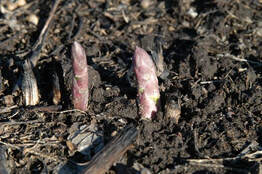 Asparagus is one of those vegetables where freshness is incredibly important. If you have never eaten asparagus fresh out of the garden, try it. It may convince you to grow some of your own. For those who have an asparagus patch, the new spears should be appearing soon. The first asparagus that comes through the ground always seems to take a long time to reach harvest size. That is because asparagus growth is temperature dependent. The higher the day and nighttime temperatures, the faster it grows. Also, the longer the spear, the quicker the growth. As the season progresses and spears get longer, the growth rate increases. Harvest asparagus by snapping or cutting. Snapping is quick and easy. Simply bend the stalk near the base until it breaks. Snapped ends dry quickly so refrigerate or use soon after harvest. If you cut asparagus, use a sharp knife to detach the spears slightly below ground level. This base is woodier than snapped asparagus, so it doesn't lose water as quickly. Cut off woody ends before cooking. So, how long can asparagus be harvested? Do not harvest at all the year of planting. The next season, harvest for 3 to 4 weeks or until the spear size drops off. Every year thereafter, the asparagus can be harvested for 6 to 8 weeks. (Ward Upham) 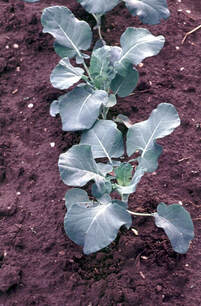 Certain vegetables can withstand cold spring temperatures as long as they have been toughened up by gradually exposing them to sunlight and outdoor temperatures. This “hardening off” process usually takes about a week. Reducing watering and temperature is the key to toughening up transplants. If possible, move transplants outside for a portion of each day. Start by placing them in a shady, protected location and gradually move them into a more exposed, sunny location as the week progresses. Hardened off cabbage, broccoli, cauliflower and onions can withstand temperatures near 20 F without being killed. Lettuce plants are not quite as tough but will be okay if exposed to temperatures in the mid 20s. Don’t hesitate to put these plants out now if extreme cold is not forecast. (Ward Upham) 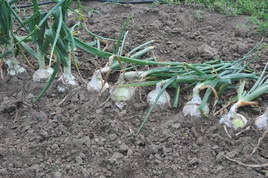 Onion types: Onions bulb in response to daylength and are classified as short-day, intermediate-day and long-day plants. Onions classified as short-day are triggered to bulb earlier than intermediate-day plants and intermediate-day plants are triggered to bloom earlier than long-day varieties. Intermediate-day onions are best adapted to Kansas conditions if you are looking for large onions. We can also grow short-day varieties but bulbs will be smaller than if they were grown further south because the plants are still small when they are triggered to bulb. Varieties: If you wish to grow large onions, choose an intermediate type such as Candy, Red Candy Apple or Super Star. Sets or plants: Though onions can be grown from seed if started inside, we are too late to raise seed-grown plants this year. Therefore, we must grow them from sets or plants. Sets are most often unnamed and will produce smaller onions. Therefore, don’t use sets if the goal is large onions but rather plants of one of the three varieties mentioned above or of another intermediate-day type. Fertilizing: Onions have shallow root systems and need good, even moisture and adequate fertilizer to develop large bulbs. Fertilize according to soil test and work the fertilizer into the soil before planting. If a soil test hasn’t been done, use a complete, balanced fertilizer such as a 10-10-10 at the rate of 1 pound per 100 square feet. Actually, any fertilizer with the three numbers being similar will work; just follow the directions on the bag to determine how much to use. Onions respond well to sidedressing (fertilizing a second time) about 3 weeks after the plants have started to grow. Use a fertilizer composed primarily of nitrogen such as nitrate of soda (16-0-0). This fertilizer may be applied at the rate of 2 pounds (about 4 cups) per 100 feet of row. High nitrogen lawn fertilizers such as a 27-3-3, 30-3-4, 29-5-4 or something similar are also good choices, but the rate should be 1 pound (2 cups) per 100 feet of row. Do not use lawn fertilizers that contain weed killers or weed preventers. Planting: Space plants 4 inches apart to provide adequate room for bulb expansion. Set plants 1 to 1.5 inches deep. Rows can be spaced 12 to 16 inches apart or whatever is convenient. Care: Keep the onions weeded to reduce competition. Water once per week if no rain. Onions should be ready for harvest around the first half of July. (Ward Upham) 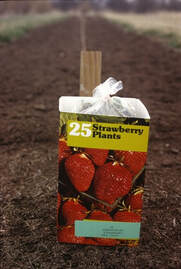 New strawberry plantings should be set early in the growing season so that mother plants become established while the weather is still cool. The mother plants develop a strong root system during this cool period when soil temperatures are between 65 and 80 degrees F. The most appropriate planting time is mid- to late March in southern Kansas and late March to mid-April in the northern areas of the state. Space plants 18 to 24 inches apart. Later in the season, runners and daughter plants develop. The earlier the mother plants are set, the sooner the first daughter plant will be formed and take root. These first daughter plants will be the largest daughter plants at the end of the growing season and will bear more berries per plant the following spring. When planting is done later, the higher temperatures stress the mother plants resulting in reduced growth, weaker mother plants and delays in daughter plant formation. Fewer and smaller daughter plants produce fewer berries, resulting in a smaller crop. Remove all flowers during the first year. New plants have limited energy reserves that need to go toward establishing the mother plants and making runners rather than making fruit. If fruit is allowed to develop the first year, the amount of fruit produced the second year is drastically reduced due to smaller, weaker daughter plants. Keep row width at 12 to 18 inches as strawberries bear most on the edges of the row rather than the center. A rototiller or hoe can be used to keep the row at the recommended width. (Ward Upham) 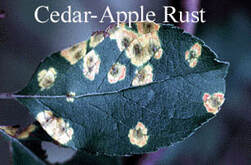 Apples are the fruit most likely to be damaged by diseases and insects of any fruit grown in Kansas. Two common diseases on apple trees are cedar apple rust and apple scab. Though some apple varieties are resistant to these diseases — including Liberty, Jonafree, Redfree, Freedom, Williams Pride and Enterprise — most varieties are susceptible. For a listing of the disease resistance of various cultivars, go to: http://extension.missouri.edu/explorepdf/agguides/hort/g06022.pdf Fungicide sprays during April and May are critical to preventing disease on susceptible varieties. With the warm spring this year, we may have to start sprays in March. The first spray should go down when leaves appear. A fungicide that is available to homeowners and very effective for control of apple scab and cedar apple rust is myclobutanil (Immunox and F-Stop Lawn & Garden Fungicide). There are several formulations of Immunox but only one is labeled for fruit. Check the label. Sprays should be done on a 7- to 10-day schedule to keep the protective chemical cover on the rapidly developing leaves and fruit. These diseases are usually only a problem during April and May. An insecticide will need to be added to this mixture after petal drop to prevent damage from codling moths that cause wormy apples. We have five products that can be used. They are listed below along with the maximum number of sprays that can be used per year.
In order to protect bees, DO NOT use any insecticide during bloom. Wait until petal fall.
Although gardeners may continue to use myclobutanil after May, certain other fungicides are more effective on summer diseases such as sooty blotch and fly speck. Consider using Bonide Fruit Tree and Plant Guard or Bonide Fruit Tree Spray after petal drop as both contain an insecticide(s) and fungicide(s). However, you are limited in the number of applications per year allowed. An organic control with the trade name Cyd-X is also labeled but will control only codling moth. A spreader-sticker can be added to the fungicide-insecticide chemical mixture to improve the distribution and retention of the pest control chemicals over the leaves and fruit. Sprays are applied every 10 to 14 days. A hard, driving rain of about 1 inch or more will likely wash chemicals from the leaves and fruit. In such cases, another application should be made. Another organic control that is often overlooked is bagging. There are bags made specifically for this purpose and are called Japanese apple bags. However, 3 lb paper bags (lunch bags) can work as well. Cut the lunch bags down to six inches long and cut a slit to slip over the stem of the apple. Place the bag over a single fruit when it is the size of quarter (about 3 weeks after petal fall) and secure with a twist tie. The bag should be removed three weeks before harvest to allow the apples to color. The Japanese apple bags already have the slit cut and a twist tie built in. Once the bags are placed on the fruit, no additional sprays are needed. The bags prevent both fungus diseases and attacks by insects. For a video illustrating all the steps required for bagging apples, see https://www.youtube.com/watch?v=sbbmgJ5F1wc Leaves Appear: Immunox or F-Stop Lawn & Garden Fungicide Petal Drop: Add insecticide to the Immunox or F-Stop. The mixture is Immunox or F-Stop + one of the listed insecticides. June 1: Drop the Immunox or F-Stop so you are applying only Bonide Fruit Tree and Plant Guard or Bonide Tree Fruit spray. Another option is to use one of the other listed insecticides plus Captan. Spray every 10 to 14 days or until the fruit is bagged. (Ward Upham) 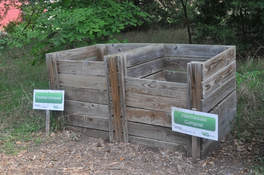 Many gardeners assume that compost is acidic but such is usually not the case. Compost is more often alkaline than acidic. The possible use of alkaline composts on highbush blueberries was enough of a problem that Oregon State University carried out a study that included determining the pH of various composts. The listing below is of some of the composts Oregon State University studied and the pH of those materials. We have not listed those composted from materials not common in Kansas such as hops and mint hay.
It is interesting to note the tremendous variability in pH; from 8.0 for dairy solids to 5.4 for composted bark. Therefore, it is important to perform a soil test on soils that have been heavily amended with compost as the compost may have affected the pH. (Ward Upham)
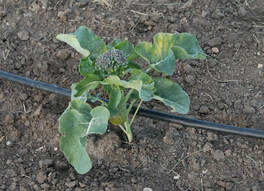 Broccoli, cabbage and cauliflower are cole crops that have a tendency to bolt (go to seed) or button (produce an extremely small head) if plants are not grown properly. These crops need to be kept actively growing through their production cycle, including growing transplants from seed. If they slow down due to under-fertilization or are stunted due to overgrowing their container, buttoning or bolting is more likely. Therefore, be sure to properly fertilize plants grown from seed and ensure they have enough light. The easiest way to fertilize transplants is to use a potting soil with fertilizer already added. Light may be more of a challenge. Often natural sunlight is not sufficient unless the plants are in a greenhouse and additional light is needed. Click here for a video on how to build a grow light. If you are not growing your own transplants but rather selecting plants later in the month for transplanting, choose small, stocky, dark green plants. Even after transplanting, these plants need to be well-fertilized. Fertilize at transplanting with a starter solution and continue to fertilize every 2 to 3 weeks until harvest. Both buttoning and bolting are irreversible. Once a seed stalk starts for form, nothing can be done to force the plant to produce a normal crop. (Ward Upham) |
AuthorsCynthia Domenghini runs the Horticulture Response Center in the Department of Horticulture and Natural Resources at Kansas State University. Other contributors include K-State Extension Specialists. Archives
March 2024
Categories
All
|
| K-State Research and Extension Horticulture Newsletter |
|
 RSS Feed
RSS Feed
